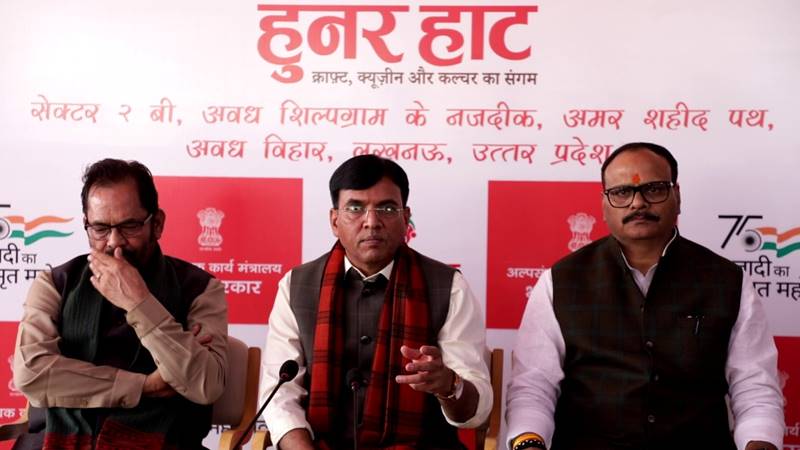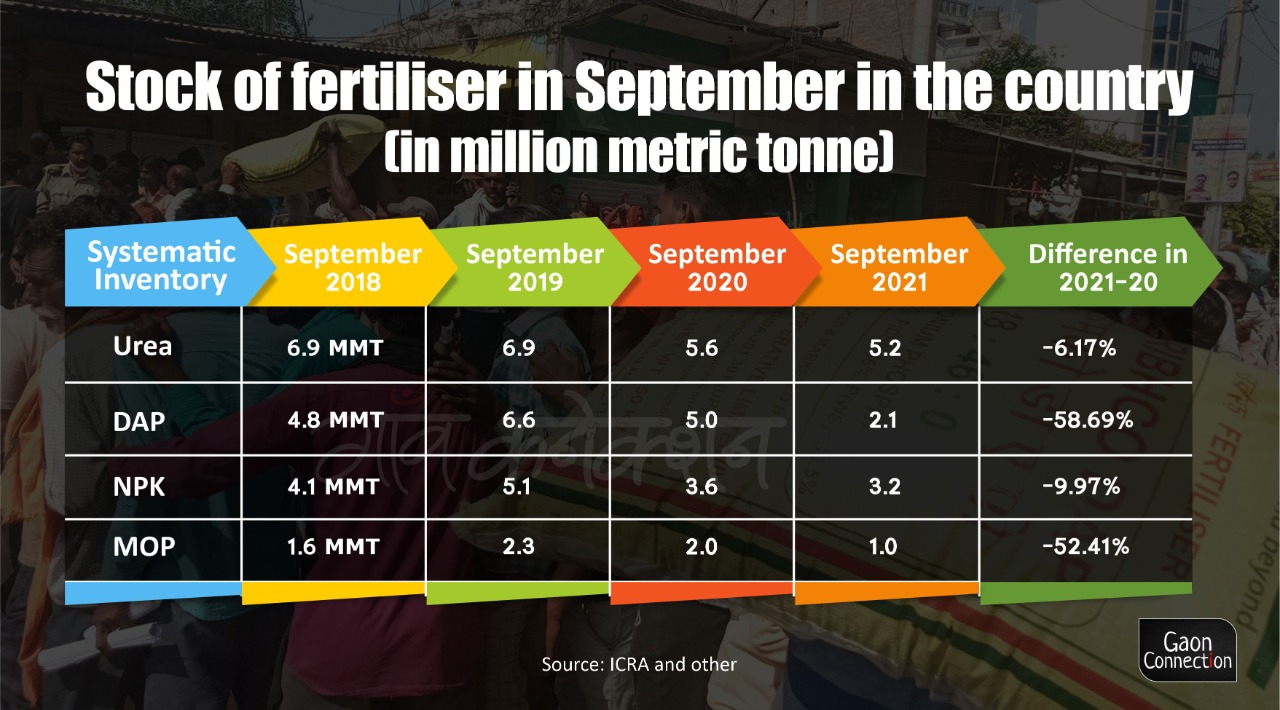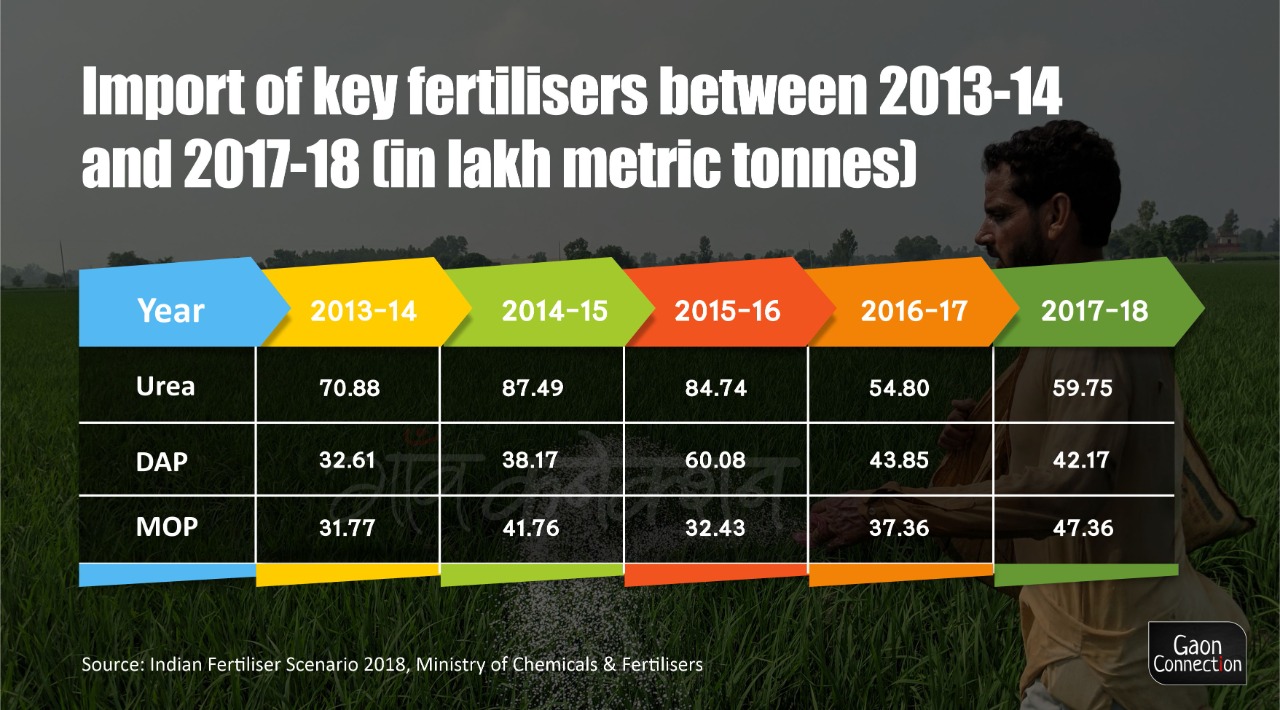As shortage of fertilisers continue to plague farmers, the central government says there is enough and more
There have been farmer agitations, appeals and even deaths by suicide allegedly due to shortage of fertilisers in the country. While the government says there is no shortage, farmers continue to be plagued by unavailability, overpricing and blackmarketing of the indispensable DAP and NPK fertilisers.


The cultivation of the rabi season crops such as wheat needs the DAP and NPK fertilisers. Photo: Arvind Shukla
Lucknow, Uttar Pradesh
In the sowing season of wheat, mustard and potatoes, farmers across several states in the country are struggling to find the Diammonium Phosphate (DAP) and Nitrogen, Phosphorus and Potassium (NKP) fertilisers so essential for their crops. In the past month and a half, the shortage of these fertilisers especially in Rajasthan, Madhya Pradesh, Uttar Pradesh and Punjab have plagued the farmers.
There were allegations that several farmers died by suicide because they were unable to get fertilisers in time for using on their lands. There were agitations, loud protests, lathi charges and utter despair because of the shortage in DAP and NPK.
Farmers complained of being overcharged for the fertilisers when they did find them. They said DPA that should cost them Rs 1200 per bag was being sold to them at Rs 1500 a bag. And NKP that should cost no more than Rs 1800 per bag was being sold at Rs 2000. Many farmers just went ahead and sowed their lands without using fertilisers.
In October, two farmers died of sheer exhaustion while waiting in line for days on end to get fertilisers from the outlets, while two others allegedly died by suicide, unable to procure fertilisers for their cultivation.
The administration, however, denied the deaths were due to the shortage of fertilisers.
Also Read: Shortage in fertilisers throw farmers in Lalitpur district in turmoil
Dhaniram Ahirwar, a 45-year-old farmer, told Gaon Connection that he managed to procure DAP after running around for five days. And that too, he had to travel 50 kilometres from his village, Khakraun, in Lalitpur district in Uttar Pradesh.
The cultivation of the rabi season crops such as wheat, mustard, potatoes, masoor dal, etc., needs the DAP and NPK fertilisers. DAP, especially, is most vital to prepare the lands for sowing.
“Many small farmers have begun sowing without the use of fertilisers. Even now, if at all it is available, the DAP is being sold to us at Rs 1500 a sack,” Shivam Baghel, from Kevlari village in Shivni district, Madhya Pradesh, told Gaon Connection. “I had to buy 35 sacks of DAP in retail for my wheat crop,” the 28-year-old farmer said.
“Agriculture here depends mostly on canal water, and we cannot afford to wait indefinitely for the government outlets to supply the fertilisers. And they were not that easily available in the open market either,” he pointed out.
It was a temporary shortage, says minister
“The unexpected rains in Bundelkhand region that fell in Uttar Pradesh and Madhya Pradesh, as well as in other parts of Madhya Pradesh such as Bhind Morena and Gwalior, besides Rajasthan, forced the farmers to sow their crops a second time around,” Mansukh Mandaviya, Minister of Health and Family Welfare and Chemicals and Fertilizers, told Gaon Connection.
“And, that is the reason they needed fertilisers again. It took time to send in the supplies to those regions, and hence the delay,” the minister explained the temporary shortage of fertilisers in the areas.

“In November, six lakh metric tonnes of DAP were needed in Uttar Pradesh of which nearly three lakh metric tonnes of it was delivered in eleven days. There is no shortage of either DAP or NKP anymore,” he declared. He requested the farmers not to believe rumours of shortage and to refrain from hoarding the fertilisers. He assured the farmers that the production of fertilizers continues in the country and they are also being imported.
“The requirement across the country for DAP for the month of November is seventeen lakh metric tonnes, but we have planned for eighteen lakh metric tonnes, so there is no shortage,” Mandaviya reiterated.
However, for many farmers the fertilisers continue to be elusive.
According to the ministry of fertilisers and chemicals, 50 per cent of the DAP-NPK fertilisers are produced in the country. And, even for that many of the components for their manufacture come from abroad.
“The shortage is mainly due to the rise in the prices of raw materials and the fertilisers in the global market,” an official from the agriculture ministry, who did not want to be named, told Gaon Connection. He also said that part of the blame was also the government’s mis-management of the matter and the delay in providing subsidies.
An expert on rural affairs and senior journalist, Arvind Kumar Singh, reiterated that mismanagement was key in the matter of fertilisers.
“There is no shortage. There has just been gross mismanagement in reaching the fertilisers on time and in the required quantity to the farmers,” he told Gaon Connection.
“Transportation is a crucial element in reaching fertilisers to the farmers. A bulk of the fertilisers, nearly eighty per cent, are transported through the railways, But on account of the Pradhan Mantri Garib Kalyan Yojna, most of the carriages were transporting grains. Then there was a shortage of coal and so the focus was diverted there. Then, the traders hoarded the material,” Singh said. Despite the checks and balances of verification of Aadhar cards etc., hoarding and black marketeering was rampant. “There is also the rising diesel prices. In many places where the trains do not reach, trucks are employed to transport the fertilisers. That has to be factored into the price hike too, he said.
Also Read: Amid fertiliser price hike, this is what IFFCO — India’s largest fertiliser seller — had to say
According to the August bulletin of the ministry of fertilisers and chemicals, in 2020, a metric tonne of DAP was priced at 336 USD. In August 2021, the price had risen to 641 USD per metric tonne. The price of urea that was 261 USD per metric tonne was now 513 USD per metric tonne.
The statistics from the Investment information and credit rating agency, ICRA, revealed that the stocks of DAP have come down in the country. In September 2018, there was a store of 4.8 million metric tonnes of DAP in the country; in 2019 it was 6.6 million metric tonnes; in 2020 it came down to 5 million metric tonnes, and in September this year, 2021, it was only about 2.1 million metric tonnes.

In April 2021, due to the rising prices of the raw materials and the fertilisers in the global market, IFFCO and other fertiliser manufacturing companies hiked their prices too. They increased the price of DAP up to Rs 700 per bag. The government taking note of this sanctioned an extra subsidy to the tune of Rs 14,775 crores for the kharif season in May then again Rs 28,000 crores on October 18, last month.
“We import many kinds of fertilisers and their prices are up in the global market. However, the prime minister decided to further increase the subsidy in October instead of raising the MRP of the fertilisers to help the farmers,” the union minister for chemicals and fertilisers, Mandaviya, said.
According to him, the subsidy for urea has gone up from Rs 1500 to Rs 2000. The subsidy for DAP has gone up from Rs 1200 to Rs 1650, NPK from Rs 800 to Rs 1015, and so on. In all, the subsidies for the rabi season amounts to Rs 28,000 crores.

However, despite the government rates being Rs 1200 per bag of DAP and Rs 1440 per bag of NKP, traders, taking advantage of the shortage in the market, are charging the beleaguered farmers up to Rs 500 more per bag. This despite the government warning traders that they could face imprisonment and a heavy fine if they were found to be selling the fertilisers at rates more than the MRP.
The government authorities however still say the reports of fertiliser shortage are baseless. “Whatever temporary shortage there was, was on account of the unseasonal rains between October 17 and 19,” Anil Kumar Pathak, joint director (fertilisers), agriculture department of Uttar Pradesh, told Gaon Connection. “There is no shortage in the state now and the companies are supplying enough as well,” he stated.

IFFCO, which supplies nearly 40 per cent of the fertilisers required in Uttar Pradesh, maintains that there is no shortfall in the state.
“There is no shortage of fertilisers,” Abhimanyu Rai, marketing manager, IFFCO, Uttar Pradesh, told Gaon Connection. “In October we allotted one lakh seven thousand metric tonnes of DAP while in November we supplied 1.90 lakh metric tonnes. Whatever the demand from each district is being met,” Rai said.
Also Read: Water hyacinth — a nuisance for water bodies, can now be used to produce organic fertilisers
In the state of Rajasthan, the shortage of fertilisers refuses to go away for Harwinder Singh, a 45-year-old farmer. Harwinder has sowed mustard in 70 acres of land near his village Delwa in Sri Ganganagar district, “I needed fifty bags of DPA, but managed only half of that,” he told Gaon Connection.
“Sowing of mustard began from September 20. It continues till mid December and some farmers are barely being able to manage two to three bags for their crop,” Harwinder said.
In a letter to Prime Minister Narendra Modi on October 5, Ashok Gehlot, the chief minister of Rajasthan, wrote that the state requirement for October was 1.5 lakh metric tonnes of DAP but it had received only 67,890 metric tonnes.
Meanwhile, it is going to be a wait-and-watch situation on how the government handles the fertiliser shortage crisis. November 26 sees the start of the winter session in parliament and all eyes will be on Mallikarjun Kharge, the Rajya Sabha opposition leader who has said he will bring up the matter in parliament.
Uttar Pradesh, Punjab and several other states have elections coming up where a big chunk of the population is made up of farmers.

